Overview
This page contains research opportunities for the spring/summer term. Please browse the tabs to see specific opportunities. Note that specific deadlines and application procedures will be updated as they become available.
NSERC – USRA
Natural Sciences and Engineering Research Council of Canada Undergraduate Student Research Award
The Natural Sciences and Engineering Research Council of Canada (NSERC) offers thousands of awards annually to support students pursuing research in the natural sciences (this includes mathematics and the social sciences!) and engineering.
NSERC awards will be awarded to undergraduate students in the Faculties of Science and Engineering who are interested in a summer research opportunity under the supervision of a McMaster faculty member. NSERC awards are meant to encourage students to pursue graduate studies by providing an opportunity to earn research work experience as an undergraduate.
For more information, visit NSERC – Undergraduate Student Research Awards & Research & Innovation – NSERC-USRA.
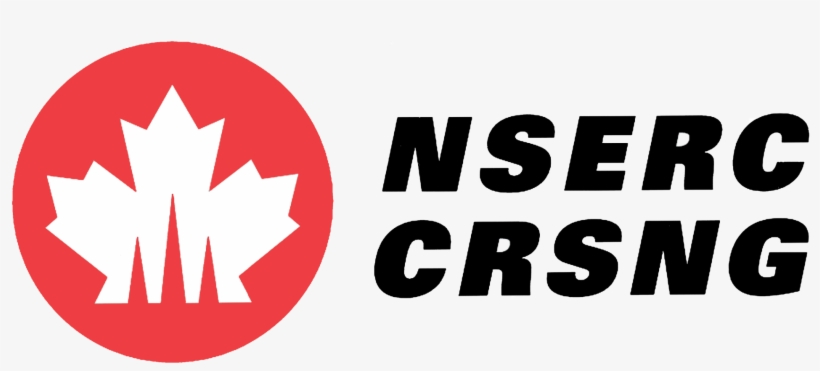
Expandable List
To be eligible to apply, you must meet the following criteria:
- you must be a Canadian citizen, a permanent resident of Canada or a Protected Person under subsection 95(2) of the Immigration and Refugee Protection Act (Canada), as of the deadline date for applications at the institution
- you must be registered, as of the deadline date for applications at McMaster, in a bachelor’s degree program at McMaster University
- you must have a cumulative grade point average of at least 9.0 (certain departments may have higher GPA requirements)
- you cannot be currently enrolled in an undergraduate professional degree program in the health sciences (e.g., MD, DDS, BScN)
- you cannot be currently registered or have been previously registered, at any time, in a graduate program in the same field of study
- you cannot have completed all your degree requirements
In addition
- if you already hold a bachelor’s degree and are studying toward a second bachelor’s degree, you may still apply for this award
- you may hold only one USRA per fiscal year (April 1 to March 31)
- you may hold a maximum of three USRAs throughout your undergraduate career (regardless of the granting agency)
To hold an award
- you must have completed all the course requirements of at least the first year of study (or two academic terms) of your bachelor’s degree
- you must have been registered in a bachelor’s degree program at the time of application and in at least one of the two terms immediately before holding the award
- you must be employed full time in eligible research and development activities in your proposed field of research during tenure of the award
- you cannot be registered in a graduate program
Notes:
- You may hold an award at any time during the year as permitted by your academic program.
- Tenure may start on a date acceptable to both you and your host institution.
NSERC and the Faculty of Science at McMaster University recognize that Black and Indigenous students encounter systemic (historical, social, and/or environmental) barriers to equitable access, representation, opportunities, and resources with respect to research and post-secondary education.
NSERC has made additional USRA positions available for self-identified Indigenous and Black applicants. From the NSERC guide on integrating EDI considerations in research: “NSERC is acting on the evidence that achieving a more equitable, diverse and inclusive Canadian research enterprise is essential to creating the excellent, innovative and impactful research necessary to advance knowledge and understanding, and to respond to local, national and global challenges.”
NSERC also states in the FAQ about the Black scholars funding that “these new funds will help address the disproportionate underfunding of Black scholars at all stages of their careers. This support for Black scholars will help strengthen efforts to break down barriers and address inequities as laid out in the Tri-agency EDI Action Plan for 2018–2025. In turn, this will contribute to making Canada’s research culture more equitable, diverse and inclusive, and to augmenting Canada’s innovation potential.”
In addition, NSERC is committed to answering “the Calls to Action of the TRC with the creation of a national dialogue with Indigenous communities to co- develop an interdisciplinary Indigenous research and research training model that contributes to reconciliation.” (Source: Strengthening Indigenous Research Capacity Strategic Plan)
If you would like to be considered for a USRA for Black and/or Indigenous scholars, you will be asked to select one or both of the self-identifying statements below on your application. Note each Department/School has slightly different application deadlines and procedures. See the “Application Procedure” tab for details.
(1) I identify as a Black person.
(2) I identify as an Indigenous person (First Nations, Inuk (Inuit), or Métis).
Statement of collection: This information will be kept confidential and will only be used to determine whether the application will be recommended to NSERC. There will be no public disclosure or distinction of NSERC USRA awarded to students self-identified as Black or/and Indigenous. Students may choose not to self-identify, and will still be considered for the NSERC USRA competition. For any questions/concerns about what it means to self-identify on this application, please reach out to Sara Cormier at the Office of Undergraduate Research (email: pmour@mcmaster.ca).
Awards are valued at $6000 + a minimum of $3268 from the contributing department (for 16 weeks).
The duration of the award is 14-16 weeks, during which the student is considered a full-time employee working in research.
Note that NSERCs are allowed during a co-op placement.
To apply, please contact the department in which the supervisor you had in mind is appointed. Clicking on the hyperlinked deadline will take you to the application instructions for each Department/School. Please keep in mind that each department sets its own application deadline and procedure.
NSERC Faculty of Science Contact Information
Department/School |
Contact |
Deadline |
Biology |
Tyler Charlebois email: charlebt@mcmaster.ca |
March 1st, 2024 |
Chemistry & Chemical Biology |
Sarra Saiyed email: saiyem2@mcmaster.ca |
February 12th, 2024 at 11:59pm |
Earth, Environment & Society |
Katherine Walker email: ugadmin@mcmaster.ca |
March 1st, 2024 at 4pm |
Kinesiology |
Katey McKay email: kinug@mcmaster.ca |
February 23rd, 2024 at 4pm |
Mathematics & Statistics |
Rabia Awan email: awanr@mcmaster.ca |
February 16th, 2024 |
Physics & Astronomy |
Aileen Pineda email: pineda@mcmaster.ca |
February 13th, 2024 at 5pm |
Psychology, Neuroscience & Behaviour |
Taylor Bowker email: pnb@mcmaster.ca |
February 28th, 2024 |
CNL – USRE
Canadian Nuclear Laboratories Undergraduate Summer Research Experience

The Canadian Nuclear Laboratories (CNL) Undergraduate Nuclear Research Experience is a new offering to support students seeking to develop research and nuclear workforce skills and to inspire future leaders in nuclear science and engineering.
These experiences will be awarded to undergraduate students in the Faculties of Science and Engineering who express an interest in pursuing a nuclear-related summer research work experience with a faculty member at McMaster. In alignment with McMaster and CNL’s strategic priorities, areas of research interest include but are not limited to:
- Supporting the development of biological applications and understanding the implications of radiation on living things.
- Supporting environmental stewardship and radioactive waste management.
- Enhancing national and global security, nuclear preparedness and emergency response.
- Supporting safe, secure and responsible use and development of nuclear technologies.
Find out more on the CNL website.
Inclusive of the award, recipients will travel as a cohort to CNL in Chalk River, for a two-week work-related experience where they will be hosted at Canada’s nationally funded nuclear laboratories. Expenditures related to the work field experience, such as travel and accommodation and coordinated events will be supported by CNL funding. Recipients will also be paired with a CNL co-supervisor for additional mentorship opportunities and to provide guidance related to research projects.
Expandable List
To be eligible to apply, you must:
- be a current full-time student in Level 2, 3, or 4 of an Undergraduate Program in the Faculty of Engineering or the Faculty of Science at McMaster University
- have a minimum cGPA of B
- have been registered at the time of application in at least one of the two terms immediately before holding the award
You are not eligible if you:
- have completed all your degree requirements and are no longer registered in an Undergraduate Program in the Faculty of Engineering or the Faculty of Science at McMaster University at the time of your application
- have started a program of graduate studies
CNL Research Experiences have a value of $10,000 each (minimum rate of pay for students would be $16.55 per hour), payable as employment income; students will be employed by McMaster University, working with a research supervisor who is typically located on or near the main campus.
Students are strongly encouraged to register their research positions as co-op work-terms with their Science/Engineering Co-op and Career Office.
The duration of the award is 16 weeks on a full-time basis during the Spring/Summer terms, which includes a 2-week on-site research experience at the CNL facility in Chalk River, Ontario (dates tbd). Recipients will be primarily based on campus to carry out their summer research experience with their faculty supervisor.
- Ensure that you are eligible
- Complete the application form below and attach your unofficial transcript to your application. Note the 2024 applications are due Friday, February 23rd at 5pm.
- While not required, it is encouraged that applicants reach out to the supervisor(s) that they are applying to; see the list of 12 projects below.
Applications will undergo evaluation by the primary faculty member(s) leading the research project with support from representatives in the Faculty of Science, Faculty of Engineering, and CNL. The selection process will consider the following criteria:
- Academic excellence, including cumulative GPA and relevant coursework completed by the applicant.
- Quality of written response addressing the question: why are you interested in participating in this research project?
- Verification of whether the student fulfills the outlined requirements specified in the project description, and in the CNL USRE general eligibility listed above.
Results will be emailed directly to the recipient(s) and payment will be issued in accordance with the Faculty’s pay procedures.
- Interim report in a verbal or virtual meeting halfway through the research experience will be scheduled for CNL, recipients and McMaster Principal Investigators. This will provide networking opportunities for McMaster Principal Investigators and CNL researchers in addition to providing mentorship and learning opportunities for recipients.
- McMaster will host a CNL cohort conference which may include posters and presentation at the end of the summer research experience.
- Inclusive of the research experience, recipients will travel to Chalk River Laboratories or other sites managed by CNL as applicable, on a 2-week work-related experience where they will be hosted by CNL.
Projects Available
Project 1: Investigating the properties of materials under extreme conditions with neutron beams Explore Project 1
with Dr. Pat Clancy (McMaster), Dr. Oksana Shiman (CNL), and Dr. Qingshan Dongand (CNL)
Student requirements: Previous lab experience or lab coursework in physics, chemistry, or engineering would be an asset for this project, but is not a strict requirement. Successful applicants will be required to complete health physics training and security screening in order to carry out work in the McMaster Nuclear Reactor.
Project 1: Investigating the properties of materials under extreme conditions with neutron beams
Neutron beams provide an ideal tool for studying the structural and magnetic properties of novel materials. In particular, neutron diffraction (or elastic neutron scattering) can be used to reveal detailed information about atomic and crystalline structure. This is essential for understanding the relationship between the structure and function of advanced materials, or in the case of many nuclear applications, investigating how these relationships change under extreme conditions of temperature, pressure, and irradiation.
The McMaster Nuclear Reactor (MNR) is the only facility in Canada which provides access to neutron beams for materials research. The MNR is currently home to two instruments for neutron diffraction: the McMaster Alignment Diffractometer (MAD) and the McMaster Small Angle Neutron Scattering facility (MacSANS). These two instruments are highly complementary, with MAD intended for the study of simple atomic structures and crystalline solids, and MacSANS optimized for more complex structures and nanoscale materials. The goal of this project is to test and develop new experimental capabilities for neutron diffraction at high temperatures and/or high pressures at the McMaster Nuclear Reactor, and for characterizing the properties of irradiated (and potentially radioactive) materials using neutron beams. This project is well-aligned with CNL’s research interests in studying the effects of extreme conditions on in-reactor materials and components for CANDU and other advanced reactors.
Project 2: Exploring the properties of quantum materials with neutron beams Explore Project 2
with Dr. Pat Clancy (McMaster), and Dr. Zahra Yamani (CNL)
Student requirements: Previous lab experience or lab coursework in physics, chemistry, or engineering would be an asset for this project, but is not a strict requirement. Successful applicants will be required to complete health physics training and security screening in order to carry out work in the McMaster Nuclear Reactor.
Project 2: Exploring the properties of quantum materials with neutron beams
Quantum materials are a family of compounds which display unique or unusual physical properties due to the effects of quantum mechanics. This includes materials such as high temperature superconductors (which display perfect diamagnetism and no electrical resistance) and quantum spin liquids (which display exotic quantum statistics and remain magnetically disordered down to the lowest measurable temperatures).
Neutron beams are an essential tool for investigating the properties of novel quantum materials, and for identifying the presence (or absence) of exotic quantum states. In particular, neutrons offer unparalleled sensitivity to magnetism, which can be used to reveal the characteristic signatures of magnetic order and magnetic phase transitions. The McMaster Nuclear Reactor (MNR) is currently the only facility in Canada which provides access to neutron beams for materials research. The MNR is home to two instruments for neutron diffraction: the McMaster Alignment Diffractometer (MAD) and the McMaster Small Angle Neutron Scattering facility (MacSANS). The MAD instrument is particularly well-suited to the study of quantum materials, with capabilities for carrying out neutron diffraction measurements as a function of temperature (from T = 6 K up to T = 800 K), pressure (up to P = 2 GPa), doping, and irradiation. The goal of this project will be to explore the structural and magnetic phase diagrams of new superconductors and quantum spin liquid candidates, and to investigate how the quantum states in these materials can be tuned under a broad range of sample conditions.
This project is well-aligned with CNL’s research interests in emerging quantum technologies and novel materials. In particular, the study of quantum materials is essential for developing new technologies that can address the nation’s quantum needs (in nuclear, defence, and space industries). This includes applications such as quantum sensors, quantum communications, and quantum computing.
Project 3: Next generation” 18F-rhodamines as potential myocardial perfusion PET imaging agents Explore Project 3
with Dr. James Inkster (McMaster), and Dr. Svetlana Selivanova (CNL)
Student requirements: As significant portion of the project will require knowledge and hands-on experience with small molecule organic synthesis, the student should have achieved high marks in their 2nd year organic chemistry classes. The student will receive health and safety training as required by McMaster Chemistry & Chemical Biology before working in the Inkster synthetic laboratory. They will also receive radiation safety training provided by McMaster Nuclear Operations and Facilities and Health Physics, followed by specialized training in radiopharmaceutical synthesis and formulation (provided by the Inkster lab). The student must be comfortable working (safely) with hazardous chemicals, ionizing radiation, and rodents.
Project 3: Next generation” 18F-rhodamines as potential myocardial perfusion PET imaging agents
The goal of this CNL summer research program research assignment is to synthesize and assay a derivative of 18F-labelled PET (positron emission tomography) radiopharmaceutical [18F]FRho6G-DEG. Rhodamines are a class of positively-charged fluorescent dyes which exhibit affinity for mitochondria-rich cardiomyocytes, and as such [18F]FRho6G-DEG is being investigated as a potential myocardial perfusion imaging agent. The successful student collaborator will be expected to synthesize an analogue of [18F]FRho6G-DEG that can be labelled via nucleophilic aromatic 18F-fluorination (vs nucleophilic aliphatic substitution), along with its 19F standard. They will then optimize the radiosynthesis this novel cardiac imaging agent and asses it for various radiochemical parameters important to PET imaging (e.g. lipophilicity, molar activity).
The final phases of this project will involve assessment of a) uptake of the radiotracer into heart cells in vitro; b) ex vivo biodistribution in healthy rats and c) small animal PET imaging in healthy rats.
Project 4: Quantifying the environmental impacts for an SMR at Chalk River site Explore Project 4
with Dr. Carmel Mothersill (McMaster), and Dr. Marilyn Stuart (CNL)
Project 4: Quantifying the environmental impacts for an SMR at Chalk River site
To contribute to Canada’s efforts to deal with the climate emergency and ensure energy security, expansion of small nuclear power plants is being considered. The siting of small modular reactors (SMR) where they are needed in remote communities is very attractive as we all want reliable electricity. While there are obvious benefits, there may be major impacts in pristine environments due to infrastructure associated with mining, milling, enrichment, transport and eventual disposal of uranium used for fuel. Our proposal seeks to quantify the environmental impacts in 3 ways. 1. Using the Chalk River site where an SMR is planned, our student will determine baseline biodiversity indices and establish baseline biomarker status for bio-indicators of ecosystem health so that future monitoring can track any adverse impacts of SMRs, i.e. we will determine the current ecosystem health status so changes can be detected.
Project 5: PET imaging of Alpha Fetoprotein in COLO-205 cancer model Explore Project 5
with Dr. Sam Sadeghi (McMaster), Dr. Svetlana Selivanova, and Dr. Candice Didychuk (CNL)
Project 5: PET imaging of Alpha Fetoprotein in COLO-205 cancer model
Recent studies shown that Alpha-fetoprotein receptor is expressed on most cancers and myeloid derived suppressor cells (MDSCs) but generally absent on normal tissues. Non-glycosylated recombinant form of human alpha fetoprotein (AFP), the natural ligand for the AFP receptor, has been successfully conjugated with p-isothiocyanatobenzyldesferrioxamine (SCN-DFO). [125I]-AFP was previously prepared by direct radioiodination of AFP and used for biodistribution studies in healthy and COLO-205 tumor bearing mice. [125I]-AFP biodistribution studies after thyroid blocking with 1%KI demonstrated the highest tumour to blood ratio of 2.75 at 168 h post injection (p.i.) and cleared from most organs including liver and kidney by 48 h p.i. Further studies are required to use [125I]-AFP for in vitro competitive binding studies to determine binding affinity of DFO-AFP to AFP receptors. Further studies are required for DFO conjugation of AFP and its characterization by ESI-MS and MALDI-MS to avoid a decrease of AFP affinity to its receptor. AFP conjugate having well characterized DFO/molecule will be radiolabeled with zirconium-89 (Zr-89) for in vitro and in vivo studies. Preliminary studies with [89Zr]-DFO-AFP in non-tumor bearing mice have shown that at 96 hours p.i., [89Zr]-DFO-AFP cleared most tissues with the highest uptake (5-11 %ID/g) in liver, gallbladder and spleen. Tumor uptake and in vivo specificity of the trace are required to study biodistribution, specific binding as well as to perform imaging studies in AFP receptors expressing COLO-205 tumor xenograft.
Project 6: Safety consideration for small modular reactors using TRISO fuel. Explore Project 6
with Dr. Adriaan Buijs (McMaster) and Dr. Alex Trottier (CNL)
Additional Information: You will be given extensive reading material in preparation. You will be attending the weekly meetings of the group and present any progress/issues you had in your work and learn about what others are doing. You will be asked (by the faculty) to prepare a poster on your work for presentation to other summer students. Your work may also lead to something that can be presented at a student conference of the Canadian Nuclear Society.
Project 6: Safety consideration for small modular reactors using TRISO fuel.
TRISO particles are small (1 mm diameter) spheres that contain the uranium and are randomly packed to form a fuel pin. You know from your courses how to calculate heat flow in spherical geometries with fixed boundary conditions. (If you don’t, that’s ok, too) Here we have a collection of spheres, and the boundary conditions are not really fixed. You will be given a code (either written in C or a commercial code) that performs a very approximate calculation of the problem with brute force. You may be doing coding to make this program work, and then running several cases. Alternatively, you may use a commercial or open-source code such as OpenFOAM to solve this problem. You will learn about heat flow (and its effect on nuclear reactors). You will be working with a graduate student who has experience in this field and who is responsible for the neutronic side of the calculation. This work is also done in collaboration with Canadian Nuclear Laboratories.
Project 7: Neutronic simulation of tritium production and charged particle tracking in Stellarators Explore Project 7
with Dr. Adriaan Buijs (McMaster) and Dr. Blair Bromley (CNL)
Additional Information: You will be given extensive reading material in preparation. You will be attending the weekly meetings of the group and present any progress/issues you had in your work and learn about what others are doing. You will be asked (by the faculty) to prepare a poster on your work for presentation to other summer students. Your work may also lead to something that can be presented at a student conference of the Canadian Nuclear Society.
Project 7: Neutronic simulation of tritium production and charged particle tracking in Stellarators
Early successful nuclear fusion reactor designs will likely be based on D-T (deuterium-tritium) fusion, because the plasma temperatures for this reaction are lower than for other reactions. While deuterium is an abundant isotope, tritium does not occur naturally and has a half-life of about 12 years. The current plan is that the fusion reactor itself will breed the tritium in a lithium blanket surrounding the fusion plasma, using the neutrons created in the fusion process. The summer research proposed here is to perform initial simulations of this process in the environment of a Stellarator, which is one of the promising designs for fusion reactors. This would involve creating a model of a Stellarator design, e.g. the Wendelstein 7-X in a state-of-the-art simulation code such as GEANT4 and/or OpenMC. The OpenMC code is widely used in nuclear fission research, while GEANT4 originated from particle physics, but has wide applications in other areas, e.g. medical imaging, as well.
Project 8: Developing a Low Temperature Molten Salt Exposure Methodology for Corrosion Study Explore Project 8
with Dr. Joey Kish (McMaster), Dr. Naid Khumsa-Ang (CNL), Dr. Harry Ha (CNL), Dr. Raul Florez Meza (CNL), and/or Dr. Lori Walters (CNL)
Student requirements: Previous lab experience or lab coursework in physics, chemistry, or engineering in areas such as condensed matter/solid state physics, statistical mechanics, or computational physics would be an asset for this project, but is not a strict requirement. Successful applicants will be required to complete health physics training and security screening in order to carry out work in the McMaster Nuclear Reactor, High Level Laboratory Facility, Tandem Accelerator Building.
Project 8: Developing a Low Temperature Molten Salt Exposure Methodology for Corrosion Study
The objective is to develop a bench-top low temperature molten salt exposure methodology to study dealloying corrosion susceptibility of structural Cr-containing alloys as it pertains to molten salt reactors. The idea is to assembly a bench top molten salt pot consisting of a small volume ceramic-lined alloy autoclave (Parker Autoclave Engineers) and suitable crucible furnace capable of heating and containing a low temperature. molten chloroaluminate electrolyte (NaCl–KCl–AlCl3); composition of 26:13:61, mol/mol, with KCl specifically added to reduce the vapour pressure. This mixture has the advantage, due to polymerization of chloroaluminates, to force the melting point of the mixture to drop below the boiling point of water, and thus improve the capability of making low temperature electrochemical measurements. As Al metal is thermodynamically stable in the alkali-chloroaluminate melt, it will be used as a pseudo reference electrode and the counter electrode to permit electrochemical potentiodynamic polarization measurements to be made on metal wires of the major alloying elements of the candidate structural alloys namely Fe, Cr and Ni. Development of such a capability is requisite in proving a physical description of dealloying corrosion as it occurs in molten salt electrolytes. The CNL intern will be mentored by Zayaan Kahn (MASc student) and Dr. Jiji Joseph (Research Associate), in addition to myself, in developing and applying the proposed methodology. will be mentored. The student can then work with CNL staff during the internship on-site to perform molten salt exposure of candidate alloys in the molten chloroaluminate electrolyte using research instruments and tools available.
Project 9: Non-destructive investigation of nuclear materials for early stage radiation damage and corrosion effects Explore Project 9
with Dr. Andy Knights (McMaster), Dr. Peter Mascher (McMaster), and Dr. Oksana Shiman (CNL)
Project 9: Non-destructive investigation of nuclear materials for early stage radiation damage and corrosion effects
Students will investigate a variety of nuclear materials, in both the as-synthesized and radiation-damaged state. Irradiations will be performed using the McMaster Nuclear Reactor and the McMaster accelerator laboratory. Samples will be characterized primarily via Doppler-broadened Positron Annihilation Spectroscopy to measure the formation and clustering of atomic scale vacancies and vacancy clusters within the first micron of the material surface, and Positron Annihilation Lifetime Spectroscopy to measure the formation of larger scale void spaces and blistering in the bulk of the material. Additional characterization could include electron microscopy and/or x-ray diffraction.
This work will occur on McMaster campus in the Tandem Accelerator Building, the Nuclear Research Building and the McMaster Nuclear Reactor. Specific tasks could include: sample handling and preparation, operating laboratory apparatus, computational data analysis, writing laboratory control software, literature review, correspondence and collaboration with other research groups, installing high-vacuum components, electronic assembly, heavy manual labour, work with power tools, close and/or delicate work.
Project 10: Non-Destructive 3D Imaging using X-ray Computed Tomography of Surrogate TRISO Particles under Mechanical Load under Room and Elevated Temperature Environments Explore Project 10
with Dr. Andre Phillion (McMaster), Dr. Madelena Spencer (CNL), and Dr. Reeghan Osmond (CNL)
Project 10: Non-Destructive 3D Imaging using X-ray Computed Tomography of Surrogate TRISO Particles under Mechanical Load under Room and Elevated Temperature Environments
TRistructural-ISOtropic (TRISO) fuel is the key advancing technology for advanced Small Modular Reactors and the Generation-IV Very High Temperature Reactors. A typical TRISO particle comprises four concentric spherical layers encasing a fuel kernel (UO2 or UCO), which includes the buffer (porous carbon), Inner Pyrolytic Carbon (IPyC), Silicon Carbide (SiC) and Outer Pyrolytic Carbon (OPyC), all of which contribute to TRISO’s physical integrity and resistance to high temperatures. The SiC layer plays the role of a pressure boundary that can withstand the build-up of internal pressure during the fission reaction and as a barrier for diffusion of gaseous and metallic fission products. Performing mechanical strength studies of the SiC layer at elevated temperatures (~1000°C) would further the understanding of the fracture properties of SiC.
X-ray computed tomography (XCT) is an emerging non-destructive characterization technique that can be used to examine the 3D microstructure of materials. By using XCT, laborious, invasive, and challenging sample preparation steps are bypassed and instead a 3D image of the internal structure of a sample is obtained. With respect to TRISO fuel and nuclear materials in general, pairing XCT with in-situ elevated temperature and mechanical testing capabilities can reveal a deeper mechanistic understanding of the degradation and failure than what is currently available.
The proposed summer student project between McMaster University, Canadian Centre for Electron Microscopy (CCEM) and Canadian Nuclear Laboratories (CNL) aims to have the student complete the following tasks:
- perform a literature review on the application of XCT for the examination of TRISO fuel,
- optimize image acquisition and scanning parameters on CNL-supplied surrogate TRISO particles in as-fabricated state,
- learn post-processing techniques and methodologies for XCT data,
- assist in the design, development, validation and testing of elevated temperature testing stage for high-temperature mechanical testing using CCEM XCT,
- develop a test plan for high-temperature mechanical testing of surrogate TRISO particles at CCEM, and
- observe room temperature mechanical XCT testing of surrogate TRISO particles at CNL.
Project 11: Development of Sample Preparation Methodology and Examination Protocol for Future Analysis of Neutron Irradiation TRISO Particles using Atom Probe Tomography Explore Project 11
with Dr. Markus Piro (McMaster), Dr. Hygreeva Namburi (CNL), and Dr. Madalena Spencer (CNL)
Project 11: Development of Sample Preparation Methodology and Examination Protocol for Future Analysis of Neutron Irradiation TRISO Particles using Atom Probe Tomography
TRistructural-ISOtropic (TRISO) fuel is the key advancing technology for advanced Small Modular Reactors and the Generation-IV Very High Temperature Reactor variant. A typical TRISO particle comprises four concentric spherical layers encasing a fuel kernel (UO2 or UCO), which includes the buffer (porous carbon), Inner Pyrolytic Carbon (IPyC), Silicon Carbide (SiC) and Outer Pyrolytic Carbon (OPyC), all of which contribute to TRISO’s physical integrity and resistance to high temperatures. The SiC layer plays the role of a pressure vessel that can withstand the build-up of internal pressure during the fission reaction and as a barrier for diffusion of gaseous and metallic fission products (FP).
Importantly, an understanding of the thermal-mechanical performance of the SiC layer in TRISO fuel in neutron irradiated states at high operating temperatures requires a further understanding of radiation induced microstructural changes and on the FP transport mechanisms. Nano-scale characterisation techniques, such as Atom Probe Tomography (APT) and High Resolution Transmission Electron Microscopy (HR-TEM), would improve the understanding of the transport mechanisms of FPs in neutron irradiated TRISO particles. In preparation of receiving neutron irradiated fueled TRISO particles at CNL, sample preparation and experimental methodology development is required for APT examination. It is therefore proposed to use surrogate as-fabricated and proton irradiated TRISO particles to establish this analytical capability during a McMaster/CNL summer student project.
The goals of this effort includes:
- performing a literature review on microstructure evolution of TRISO particle layers due to irradiation damage and relevant microscopy techniques (FIB/APT/TEM),
- developing a sample preparation procedure and fabricating the APT specimens from SiC layer and interfaces by using FIB technique (CCEM),
- performing APT characterisation on CNL supplied surrogate TRISO particles (as-fabricated and proton irradiated),
- investigating using TEM with STEM/EDS techniques to ensure the prepared LEAP tips contain features of interest (to be performed at McMaster or CNL),
- obtaining accurate 3D compositional information from the grain boundaries or/and grain interiors,
- gaining insights into 3D spatial distribution of any irradiation induced products in the SiC layer of proton irradiated surrogate TRISO particles by using APT at McMaster University, and
- observing the microscopy investigation sessions of samples at CNL.
Project 12: Evaluation of SiC under elevated temperature conditions Explore Project 12
with Dr. Stephen Veldhuis (McMaster), Dr. Bipasha Bose (McMaster), Dr. Vineet Bhakhri (CNL), Dr. Sterling St. Lawrence (CNL), and Dr. Hygreeva Namburi (CNL)
Project 12: Evaluation of SiC under elevated temperature conditions
The challenging conditions prevalent in reactor environments, characterized by factors such as neutron irradiation and elevated temperatures, instigate noteworthy modifications in material properties. These alterations impose limitations on the operational efficiency and safety thresholds of diverse reactor types. Furthermore, there exists a significant dearth of data concerning the performance of various nuclear materials in these extreme environments. This scarcity of information is crucial for the scientific community, especially in the design and development of small modular reactors and other advanced reactor types. This project aims to conduct a materials assessment of SiC at moderately elevated temperatures. The primary focus will be on developing testing techniques for elevated temperatures and determining the elastic-plastic properties (hardness, elastic modulus) of the selected material.
OUR Summer Research Experience 2024
The Office of Undergraduate Research (OUR) aims to make research an integral part of the undergraduate student experience. One of our priorities is to get students involved in research early in their undergraduate career. The OUR Summer Research Experience is offering support for students in level I or II in the Faculty of Science that are seeking to gain paid research experience and develop research skills. Depending on the research project, students will work 12-35 hours per week for 14-16 weeks. Students will be paid $16.55 per hour. Descriptions of each project is listed below. The 2024 applications are due Friday, February 23rd, 2024 at 5pm.
Students must sign-in with their McMaster University account to access the application form.
Expandable List
To be eligible to apply, you must:
- be a current full-time student in Level I or II in an Undergraduate Program in the Faculty of Science at McMaster University
- have a minimum GPA of 8.0 (B)
To be eligible to hold an award, you must have been registered at the time of application in at least one of the two terms immediately before holding the award.
The duration of the research experience is 12-16 weeks during the Spring/Summer terms (May – August).
- Ensure that you are eligible
- Complete the application form below and attach your unofficial transcript to your application. Note the 2024 applications are due Friday, February 23rd at 5pm.
- While not required, it is encouraged that applicants reach out to the supervisor(s) that they are applying to; see the list of 17 projects below.
Applications will undergo evaluation by the primary faculty member(s) leading the research project with support from the OUR. The selection process will consider the following criteria:
- Academic excellence, including cumulative GPA and relevant coursework completed by the applicant.
- Quality of written response addressing the question: why are you interested in participating in this research project?
- Verification of whether the student fulfills the outlined requirements specified in the project description.
Results will be emailed directly to the recipient(s) from pmour@mcmaster.ca and payment will be issued by the Faculty of Science in accordance with the Faculty’s pay procedures.
Projects Available
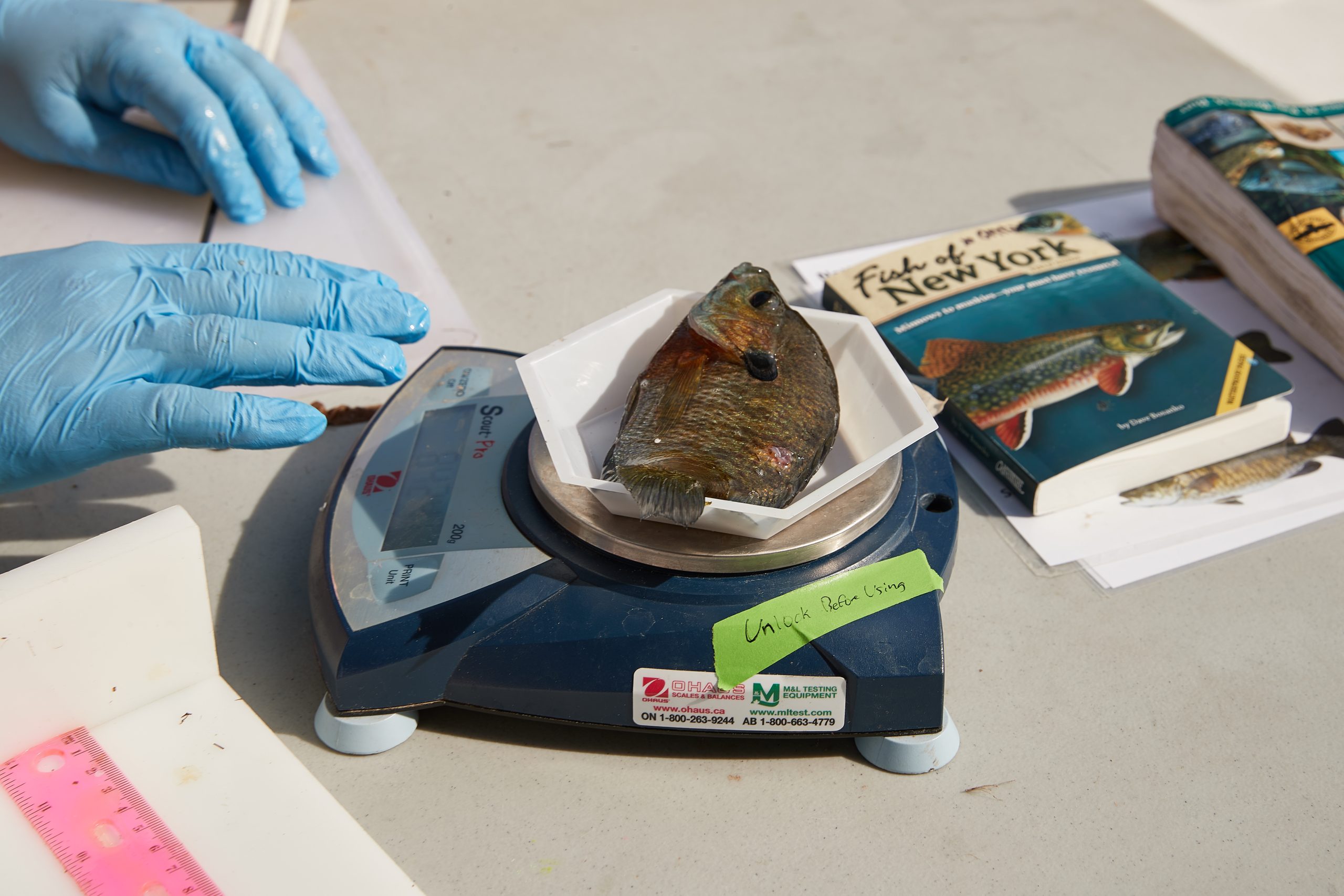
Monitoring Invasive Species in Hamilton Harbour Explore Dr. Balshine's Project
Field and Lab-based research with Dr. Balshine
Number of student positions available: 1-2
Number of hours per week: 14-25
Student requirements: Credit in Bio 1A03 and 1M03 with a minimum grade of A. Ability to swim and comfortable around water. Have a full G drivers licence
Monitoring Invasive Species in Hamilton Harbour
Students will be visiting 6 different sites around the harbour, set traps for fish and then collect them the next day. Fish are transported to McMaster and they are then dissected to provide more information about population abundance in relation to abiotic and biotic factors influencing the harbour. Water quality tests are also performed at each site and the students will have to wear chest waders and life jacket to do this. Dr. Balshine is looking for 2 outstanding, reliable, careful students who would want to be involved in a group field and lab-based project. Students are expected to be in the lab/field 14 hours per week. Ideally, students should have a full G license and be comfortable getting dirty and be strong swimmers. No swimming or driving is required but preference is for students that have these skills.

Working with the world’s only flying mammals Explore Dr. Faure's Project
Lab-based research with Dr. Faure
Number of student positions available: 2
Number of hours per week: 14-28
Student requirements: An interest in animal research.
Working with the world’s only flying mammals
During the summer of 2024, students will have a unique opportunity to work with the world’s only flying mammals in Canada’s first and only captive research colony of insectivorous bats at McMaster University. Successful applicants will work alongside a graduate student bench mentor in a research pairing to maximize their learning experiences. Students who are interested in careers working with animals (e.g. veterinary medicine) may also have an opportunity to shadow the technicians of the Psychology Animal Facility and learn about multiple animal models used in scientific research. One goal is to provide students with a hands-on research experience. Another goal is to kindle intellectual curiosity by exposing students to exciting scientific research conducting studies with bats in captivity and learning research methods in bioacoustics, hearing, and mammalian integrative physiology. Students will also be exposed to and interact with personnel in other animal research labs through connections with colleagues at McMaster. Successful applicants must complete WHMIS lab safety, biosafety, and animal training courses, and receive a series of preexposure medical vaccinations so they can safely work with bats. Dr. Faure is looking to hire 1-3 students who are willing to work a minimum of 14 hours a week from May to August 2024.

How does music drive our movements and interactions on the dancefloor? Explore Dr. Cameron and Dr. Trainor's Project
Lab-based research with Dr. Trainor and Dr. Cameron
Number of student positions available: 1-2
Number of hours per week: 14
Student requirements: no specific requirements
How does music drive our movements and interactions on the dancefloor?
Humans love to move to music and tend to do so in groups. But what determines how we dance? Is it the irresistible rhythms of the music, or the social cues of others dancing near us? This project will investigate audience members’ movements, collected using motion capture at a real concert in the LIVELab. We will be processing the data before analyzing it to assess how people interacted through inter-individual synchronization. And, we will test how movements differed depending on what musical features were present. The student(s) involved in this project will review literature, work with motion capture data, perform data analyses, and if time permits, help with writing of the paper. Dr. Cameron and Dr. Trainor are looking for 1-2 students to work 14 hours a week from May to August, 2024.

Design, construction, and testing of the autonomous indoor ecosystem Explore Dr. Kolasa's Project
Lab-based research with Dr. Kolasa
Number of student positions available: 2
Number of hours per week: 35
Student requirements: credit in Bio 1M03, interest in environment, ecology, or food sustainability. Eligible for Student Work funding.
Design, construction, and testing of the autonomous indoor ecosystem
This project focuses on the rapidly growing interest in indoor food production (e.g., aquaponics). Dr. Kolasa is looking for 2 students that are interested in aquatic ecology, algae, and microbiota, but any student with a science inclination may learn and contribute to this project. A passion for research is vital. Dr. Kolasa’s lab is preparing one Research System to start operation in early May in the Biology Greenhouse. They have another dormant system that a team of students (TEAM) would take over. The TEAM will be solely responsible for setting up, managing, and monitoring their system’s performance. The second system will be the focus of a PBL Team’s project: to populate and operate throughout the summer. The TEAM will be able to follow and learn from the development of the Research System. That project will ultimately become a second research system but with any modifications and improvements, the TEAM implements. In practice, the TEAM and the research group will work very closely: in the same space, on the same question, and mostly simultaneously. This PBL setup will give the TEAM complete independence and researcher support from a similar project. The research team consists of the PI (J. Kolasa), two international interns (MITAC Globalink funded), and likely a summer student or two. Students will learn skills and gain knowledge in ecosystem theory, aquaponics, green recycling, biota and environmental parameters monitoring, and simple data analyses for management decisions. Students will also write a full report at the summer’s end. Dr. Kolasa’s research team will provide supervision, guidance, and consultation to ideas initiated by the TEAM.
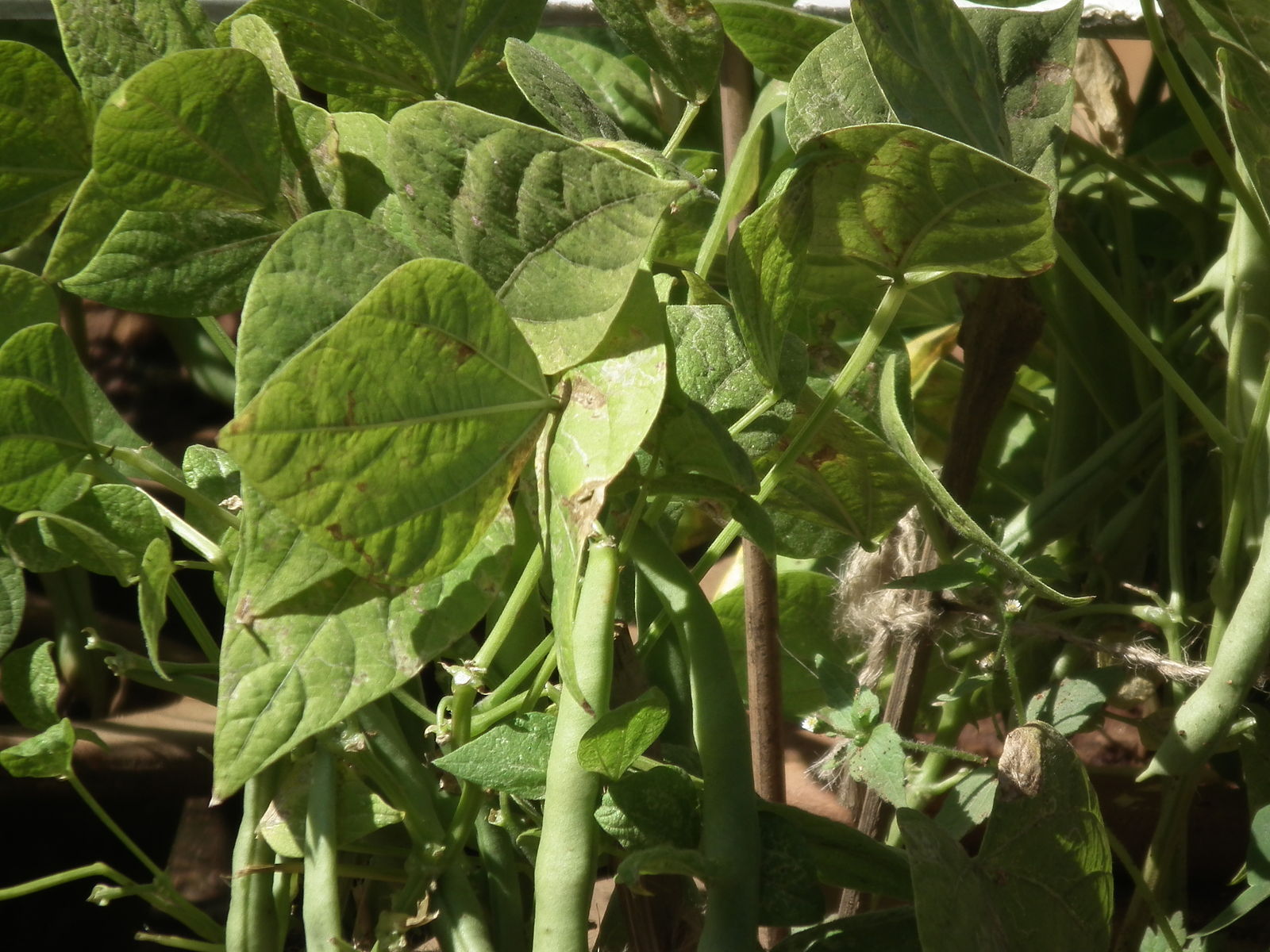
Shaping up crop-associated soil microbiomes using phage Explore Dr. Doyle's Project
Field and Lab-based research with Dr. Doyle
Number of student positions available: 1
Number of hours per week: 35
Student requirements: Some lab experience would be preferred, especially having taken at least one lab-based course that covers aseptic technique. No prior experience working with phage is necessary.
Shaping up crop-associated soil microbiomes using phage
Dr. Doyle is looking for one OUR summer student to work alongside other undergraduate and graduate students in the SyM3 Lab (sym3lab.ca) on a project that involves isolating bacteriophage (or phage, viruses that infect bacteria) from soils collected from fields across Southern Ontario. The OUR student will conduct phage plaque assays to determine which bacterial species each phage infects, and select those phage that are specific to bacterial strains that cause a reduction in plant growth. Through this work, the student will gain skills related to designing experiments and maintaining them, working with bacterial cultures and using proper aseptic technique, data analysis using the R programming language, and designing a poster to communicate findings from their experiment to a broad audience. Dr. Doyle is especially looking for a student who values collaboration, working as part of a team to achieve research goals. They are expected to attended group meetings over the summer, including a journal club that will expose them to key literature on microbiome science and phage therapy.

Bees that nest in snail shells Explore Dr. Dudley's Project
Field and Lab-based research with Dr. Dudley
Number of student positions available: 2
Number of hours per week: 14
Student requirements: Students should be interested in field ecology and be able and willing to work outside for 5 hours at a time. Ecological experience or any outdoor work experience are desirable.
Bees that nest in snail shells
The students will carry out ecology and behavioural studies of Osmia conjuncta, a native snail shell nesting bee, and Cepaea sp., the non-native grove snail. Students will work at the McMaster Forest in the field, the greenhouse, and the lab to find snail shells with hatching bees, put out cleaned shells as a nesting substrate,observe bees making shell choice, and identify bees. They will assess population size for the snails and bees. Students will be supervised by Dr. Dudley and work with a 4th year thesis student who is researching this system. The research assistants will learn hypothesis testing, ecology field techniques, experimental techniques, and plant, bee, and snail identification. Students will also do bee community collections at West Campus. The field site is accessible by Hamilton Bus (HSR) and by car with 15-30 minutes travel time from campus.

Data extraction using large language models tools. Explore Dr. Vargas-Hernandez's Project
Computer modelling-based research with Dr. Vargas-Hernandez
Number of student positions available: 1
Number of hours per week: 14
Student requirements: Python programming, and experience with the Hugging-Face platform.
Data extraction using large language models tools
Develop an API to extract data from websites and text files using tools like ChatGPT, Llama, or other large language models.
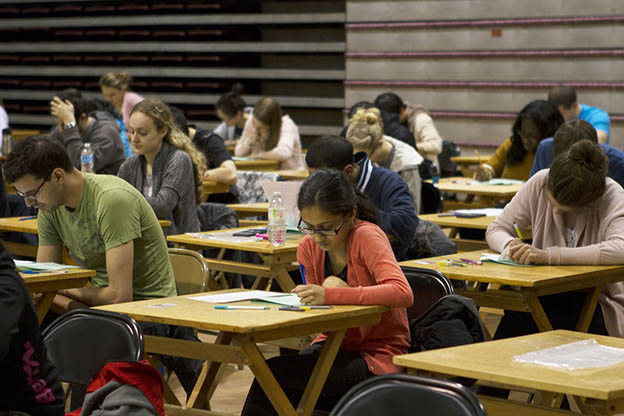
Assessing the impact of test anxiety on heart rate variability and academic performance Explore Dr. Nederveen's Project
Pedagogy and physiology research with Dr. Nederveen
Number of student positions available: 1
Number of hours per week: 35
Student requirements: No previous research experience required. Completion of Human Anatomy and Physiology I (KIN1A03/KIN2Y03; cross-listed) and II (KIN1AA3/2YY3; cross listed), or equivalent Anatomy/Physiology course.
Assessing the impact of test anxiety on heart rate variability and academic performance
This study is interdisciplinary, focussing on pedagogy and physiology. Performance of any task can be reduced by levels of perceived, cognitive or cellular stress. Student anxiety, specifically test anxiety, is common factor that can impair student performance in university courses. The measurement of heart rate variability (HRV) is a novel and promising tool for non-invasive assessment of cardiovascular status. HRV is the variations of the intervals between heart beats (typically termed the rhythm-to-rhythm interval) and can determine oscillations or ‘changes’ in heart beats. HRV reflects the autonomic nervous system and control of the ‘fight-or-flight’ response. In healthy individuals, anxiety due to mental stress will decrease HRV simultaneous with an increase in HR. A growing body of evidence has reinforced the notion that HRV is related to the mental state of students following various academic examinations in students at a variety of educational levels. To date, very little is known about test anxiety in first- and second-year anatomy and physiology students across various departments and faculties at McMaster University. This project will explore the relationship between physiological variables and academic outcomes, with the goal of integrating these results into the pedagogical approach to teaching anatomy and physiology. Students will conduct a literature review, be introduced to ethical conduct for research involving humans, assist with data collection, perform analysis and engage in academic writing process for journal article submission. Successful applicants must complete WHMIS lab safety, biosafety, a course on research ethics, and will work alongside a graduate student or postdoctoral fellow to maximize their learning experience with various techniques.
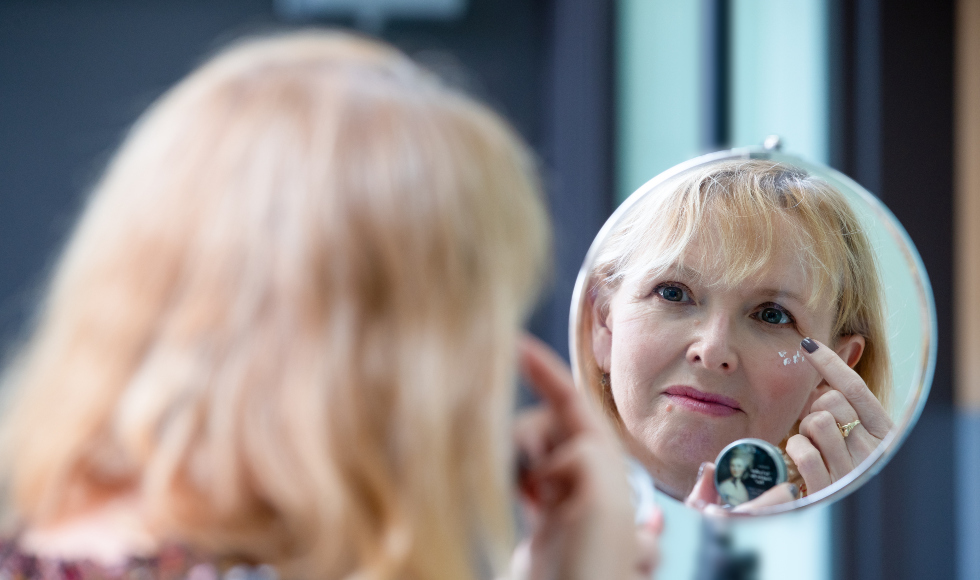
Toxicity of Historical White Lead Makeup Explore Dr. McNeill's Project
Lab-based research with Dr. McNeill
Number of student positions available: 2
Number of hours per week: 35
Student requirements: Successful completion of first year chemistry (1A03 and 1AA3) and physics (1C03 and 1CC3 or 1A03 and 1AA3)
Toxicity of Historical White Lead Makeup
My research group, Toxic Allure, studies historical white lead makeup recipes with the goal of assessing how toxic they may have been. Most historical makeup is made from white lead, and it has been thought for the last 30 years that this form of lead cannot be absorbed into skin. In the last two years, my research group has done some very exciting work that shows that this is not completely true. If white lead is mixed with oils or acids, it can penetrate significantly into skin.
We study the underlying mechanisms by which lead can be absorbed into and through skin using synchrotron techniques. We use synchrotron µX -Ray Fluorescence maps obtained at the Canadian Light Source to map the location of lead absorbed from makeup through pigskin at different points in time. We have discovered that lead is taken up in specific tissues in the skin, and that the absorption is much faster than previously assumed. The image below is a map of lead absorbed into skin from lead acetate, a compound created when white lead is mixed, as in some historical recipes, with vinegar. We can see that the lead is absorbed in specific cells in skin (red circle), into connective tissue (blue circle) and excitingly we can see that it is taken up into sweat glands (yellow circle). We can also see lead at the very bottom of the sample which shows that lead should go through skin into saline placed at the back of the skin. However, when we measure the saline, the amount of lead measured is less than these maps suggest. This suggests that there may be a problem with the standard Franz cell methodology that has been used to test lead absorption through skin. The amount of lead that is absorbed through skin may have been underestimated for the last few decades.

My hypothesis is that there is a reaction taking place between the form of lead that passes through skin and elements in the phosphate buffered saline. I think the lead may be forming insoluble compounds that stick to the back of the skin and therefore do not dissolve in the saline.
This summer I want to test whether we can more accurately measure lead that passes through the skin by changing the material behind the skin to deionized water or alcohol. The summer research plan will be to test the diffusion of lead acetate and some lead-based historical makeups through skin into water or alcohol by making measurements using a Franz cell system. By testing the levels of lead in the water and alcohol and comparing with levels in saline we will be able to see if we can conduct more accurate testing. I am looking for two level I or II students to work on this project.
Students will learn how to set up a Franz cell system with pigskin membranes and how to send the results for ICP-MS testing for lead levels. They will conduct analysis of the ICP-MS data. They will learn to safely work with lead compounds and how to make some historical makeup recipes. Finally, they will learn how to prepare skin samples for testing at the synchrotron and learn how to analyze the lead maps obtained from skin.
Image credit: dailynews.mcmaster.ca
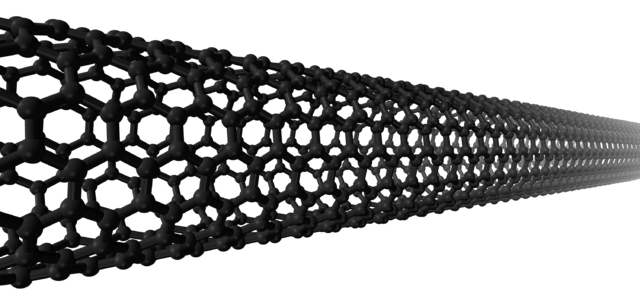
Selective Dispersion of Metallic Carbon Nanotubes Using Conjugated Polymers Explore Dr. Adronov's project
Lab-based research with Dr. Adronov
Number of student positions available: 1
Number of hours per week: 35
Student requirements: completed level II chemistry and chemical biology
Selective Dispersion of Metallic Carbon Nanotubes Using Conjugated Polymers
Single-walled carbon nanotubes (SWNTs) have attracted tremendous attention from the scientific community since their discovery. Their unique properties, which include high tensile strength, a high aspect ratio, thermal and electrical conductivity, and extraordinary optical characteristics, make nanotubes potentially valuable as advanced materials in a variety of applications. SWNTs have been successfully incorporated into field-effect transistors, photovoltaics, flexible electronics, sensors, touch screens, and various other devices. Although many demonstration studies have been performed, applications of SWNTs in practical devices have not kept pace with academic research. This results from the fact that all commercial nanotubes are produced as an impure mixture of semiconducting (sc-SWNTs) and metallic (m-SWNTs) structures. Since components of electronic devices require either pure m-SWNTs (electrodes, interconnects, etc.) or pure sc-SWNTs (transistors, sensors, etc.), purification of as-produced SWNTs is imperative. Several methods for separating and purifying SWNTs have recently been reported, but are extremely expensive and impractical. Recently, selective dispersion using conjugated polymers has emerged as a promising low-cost and scalable process that has been successfully demonstrated to isolate sc-SWNTs using a variety of conjugated polymers. Despite this progress selective dispersion of m-SWNTs remains elusive. The Adronov group has recently shown that the electronic nature of the conjugated polymer backbone has a significant effect on dispersion selectivity through inductive effects. We have found that relatively electron-poor conjugated polymers disperse m-SWNTs to a greater extent than structurally similar electron-rich conjugated polymers. This concept has recently been demonstrated through the comparison of a poly(fluorene-co-pyridine) conjugated polymer before and after post-polymerization functionalization. By partially methylating the pyridine units, cationic charges were introduced onto the conjugated backbone, converting the polymer from electron-rich to electron-poor. It was shown that the electron-poor conjugated polymer dispersions were enriched in m-SWNTs, while the electron-rich counterpart solely selected for sc-SWNTs. This project will build on this research from the Adronov group by developing new polymer systems with electron withdrawn backbones that improve the isolation of m-SWNTs through a selective dispersion process. The successful applicant will work with Adronov Team members and will be trained on all required chemistry and characterization techniques. This position would involve 35 hours per week of work (full-time).
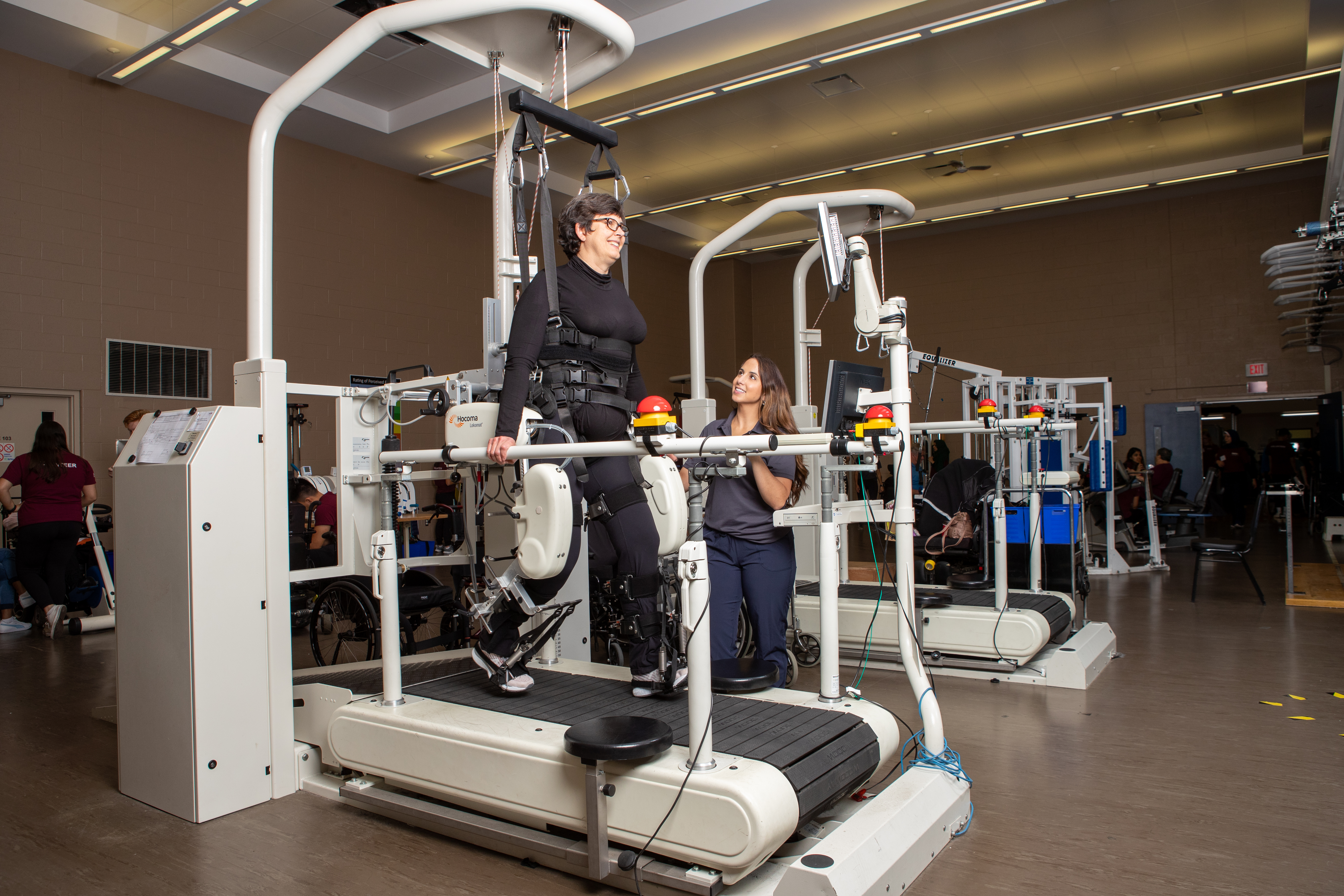
Breaking Boundaries: Community-Driven Equity, Diversity, Inclusion, Indigeneity, and Accessibility (EDIIA) Excellence in Adaptive Exercise Programs for People Experiencing Disabilities Explore Dr. Yi's project
EDIA research with Dr. Yi
Number of student positions available: 3
Number of hours per week: 14
Student requirements: no specific requirements
Breaking Boundaries: Community-Driven Equity, Diversity, Inclusion, Indigeneity, and Accessibility (EDIIA) Excellence in Adaptive Exercise Programs for People Experiencing Disabilities
People’s lives are influenced by various social factors such as race, ethnicity, relocation, gender, sexuality, age, and disability. Consequently, everyone possesses a unique combination of social, cultural, and personal identities. Identity formation is intersectional in nature, and individuals’ life experiences occur at the intersections of various social systems.
Adaptive exercise programs provide specialized services and support for meaningful and effective exercise opportunities for people with various abilities. In community-based exercise settings, each program participant has their own unique needs, interests, and aspirations that contribute to their sense of belonging and place. To uphold agency, autonomy, and a sense of community, community-driven social change in promoting EDIIA in exercise programs requires actions rooted in collaborative reflexivity, respectful relationships, and reciprocal contributions stemming from diverse perspectives.
Students in this project will experience unique community-engaged participatory research approaches as “communicators” and “connectors.” Under the supervision of a post-doctoral fellow and graduate students in our lab, they will organize one-on-one interviews and talking circles, participating in these data collection phases as field-note takers. Additionally, students will have the opportunity to engage in data analysis as coders, using the qualitative research software NVivo. Successful applicants will complete a series of safety, research software, and ethics training.
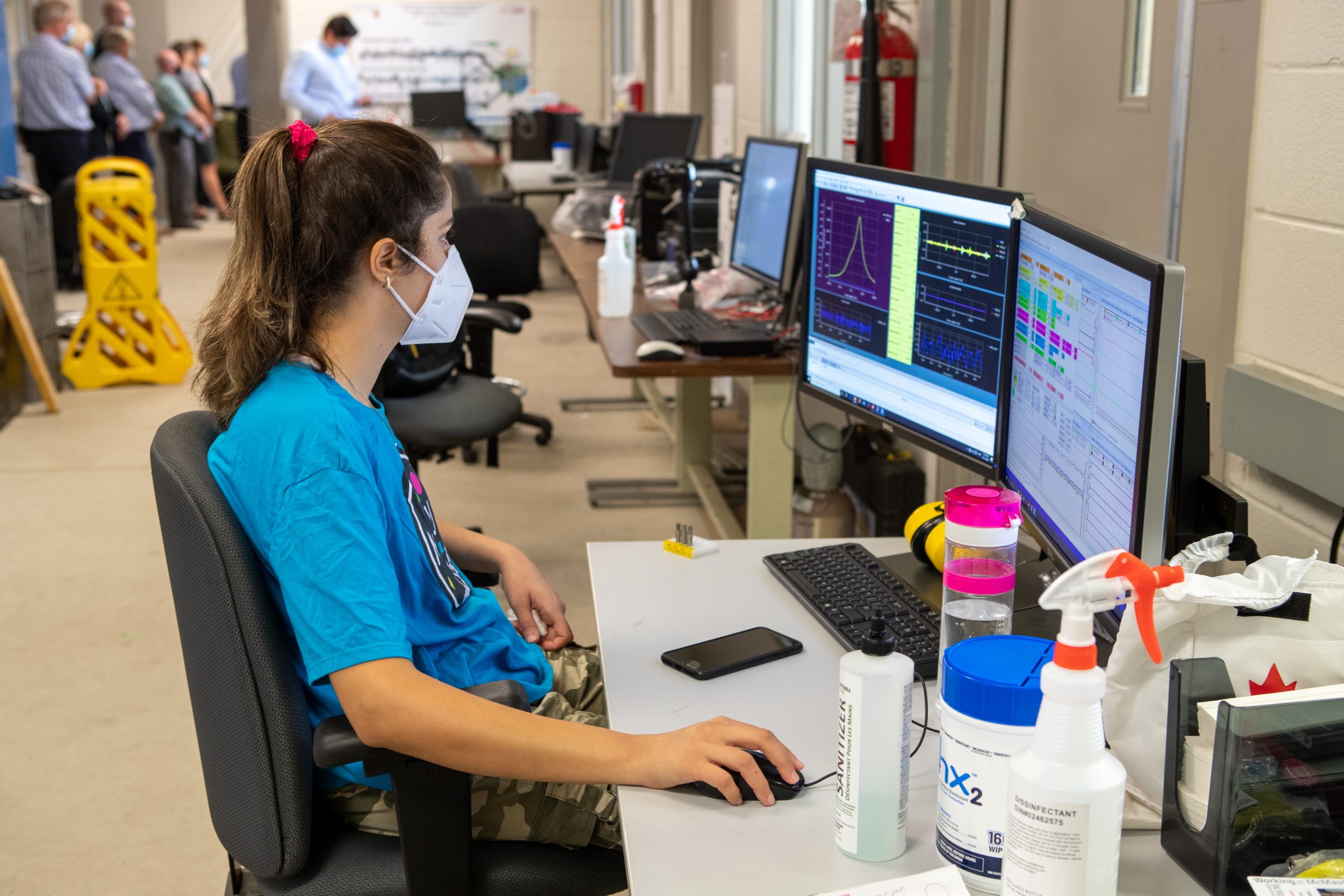
Are we educating our undergraduate students to be safe and healthy workers? Explore Dr. O'Reilly's project
Ergonomic research with Dr. O’Reilly
Number of student positions available: 3
Number of hours per week: 14
Student requirements: It is preferred that students have taken an undergraduate Research Methods and Statistics course.
Are we educating our undergraduate students to be safe and healthy workers?
Healthcare and allied health professions experience some of the highest rates of work-related injuries, particularly musculoskeletal disorders and psychological injuries. Despite many workplaces implementing occupational health and safety (OHS) training early on in a job, the novice workers and recent graduates are at highest risk for injury. Our health-related and life science undergraduate programs provide essential knowledge and applied skills for success in placement opportunities, graduate programs, and future careers in the health field. However, do we know if our curriculum provides students with the general knowledge of how to keep themselves physically and psychologically safe at work? This project will explore student’s experience with OHS and injury prevention knowledge within their undergraduate courses and curriculum. Dr. O’Reilly is looking for 3 students that are passionate about their education and helping to keep their peers safe in their future health-related jobs! The summer research students will conduct a literature review, survey administration and data analysis, and manuscript writing for peer-reviewed submission. In addition to research experience, students will gain networking skills with health and safety professionals in the public sector (healthcare).

3D Printing for Mathematics Explore Dr. Naylor and Dr. Junkins' project
Pedagogical research with Dr. Naylor and Dr. Junkins
Number of student positions available: 1-2
Number of hours per week: 14
Student requirements: Students must have taken MATH 2X03; programming skills or previous experience 3d printing an asset but not required.
3D Printing for Mathematics
3D printing and additive manufacturing has been a transformative, revolutionizing prototype design and offering custom, innovative solutions in industries such as healthcare, aerospace, and architecture. It also has applications in education, where it can provide an interactive and hands-on approach to learning. In this project, students will perform a literature review on manipulatives in education, design 3D models to be used in mathematics education, and write instructional content incorporating manipulatives into lesson plans. Previous experience 3D printing is an asset but is not required.
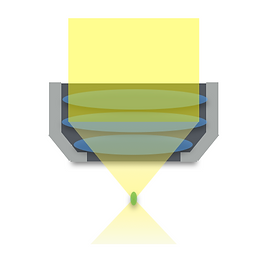
Multiplexed FLIM enabled FCS and its biomedical applications. Explore Dr. Fradin and Dr. Fang's project
Lab based research with Dr. Fradin and Dr. Fang
Number of student positions available: 1
Number of hours per week: 35
Student requirements: Students from the medical/biophysics, iSci, life science, or biology program with interests in optical microscopy are welcome to apply. Hands-on experience with microscopy, cell culture, and general wet lab experiments would be an asset but not required.
Multiplexed FLIM enabled FCS and its biomedical applications.
The motivation of this project is to explore how two different fluorescence microscopy techniques, namely fluorescence correlation spectroscopy (FCS) and fluorescence lifetime imaging microscopy (FLIM), can be combined into one functional system. While FCS measures fluorescence intensity, FLIM measures fluorescence lifetimes. By understanding how these two techniques can work together, we can study more complicated systems, such as one where the fluorescence lifetime changes during an FCS experiment, or a system with a mixture of dyes operating in the same spectral range but with different fluorescence lifetimes. One way these two techniques can be combined is in a new technique called fluorescence lifetime correlation spectroscopy (FLCS).
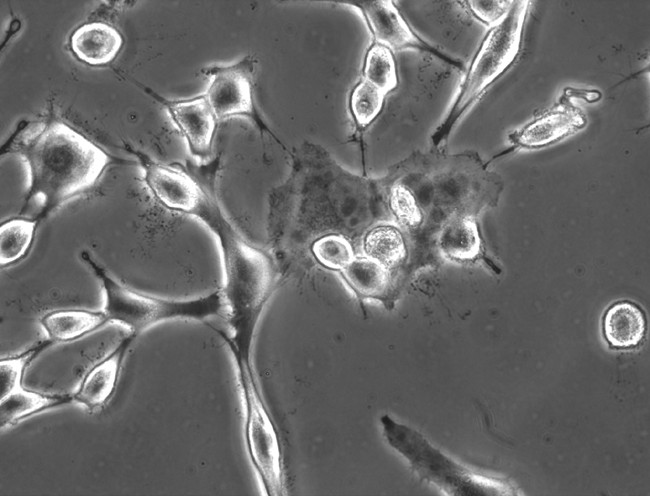
How do the cells know their whereabouts in a developing embryo? Explore Dr. Simsek's project
Lab based research with Dr. Simsek
Number of student positions available: 2
Number of hours per week: 20
Student requirements: students should have credit in at least 1 of these three courses: Statistics, Genetics, Developmental Biology (B+ grade) and at least 1 of these two courses: Calculus, Introductory Physics (B+ grade) or programming skills (Matlab, C++)
How do the cells know their whereabouts in a developing embryo?
The vertebrate embryo forms a longitudinal head to tail body axis during early development. This axis gets segmented into tissue blocks called somites as the tail of the embryo elongates. Cells commit into making somites periodically at specific positions. Recent work showed that tail bud cells establish a gradient of the fibroblast growth factor (Fgf) signaling (from tail towards the somites) and this gradient oscillates periodically to instruct cells somite positions. For this summer project, two students will learn molecular tools such as fluorescence immunostaining and advanced microscopy. The project will involve evaluating cellular response of Fgf signaling readout molecules to chemical drugs targeting the pathway or the extracellular depositions within the tissue. Students will design their experiments, perform time-controlled drug perturbations, take part in imaging and analysis of their data by working with zebrafish embryos. In the end of 14-weeks study, students will write a detailed report of their findings and present their research in the lab meeting. A curious mind with quantitative literacy, previous experience with basic molecular biology tools and/or confocal imaging are preferred skills.
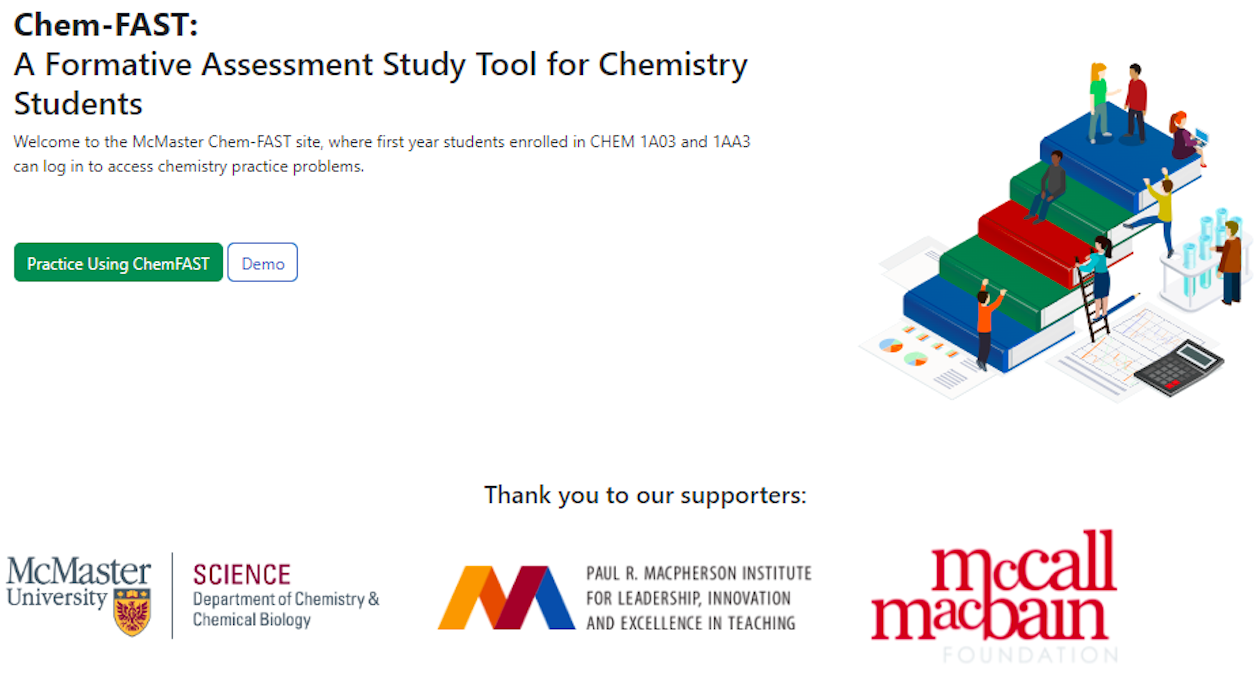
Chemistry Formative Assessment Study Tool, Chem-FAST Explore Dr. Greenberg's project
Pedagogy research with Dr. Greenberg
Number of student positions available: 1
Number of hours per week: 12
Student requirements: Credit in CHEM 1AA3, be willing to work collaboratively in a diverse group; basic experience in Python is a bonus.
Chemistry Formative Assessment Study Tool, Chem-FAST
Students’ primary study resource in our first-year chemistry classes are the prior assessments. We are building a digital learning tool for students, called the chemistry formative assessment study tool (Chem-FAST), that uses a database of questions from the past decade of assessments in first-year chemistry. Chem-FAST incorporates principles of cognitive psychology, such as spaced practice and practice testing. Moreover, Chem-FAST is based on adaptive testing, utilizing statistical data to deliver questions that are individualized for each student, dynamically adjusting to their ability level. Students obtain a realistic picture of their progress and performance and are challenged at just the right level. In effect, each student gets a personalized set of practice questions, tailored to their individual needs, to maximize their preparation for assessments and improve their metacognitive skills.
We will carry out a pilot project this summer to examine whether Chem-FAST is an effective learning tool for students. This project will involve obtaining research ethics approval, collecting feedback from students, collecting and analyzing data, and troubleshooting Chem-FAST. Dr. Greenberg is looking for one motivated student with excellent time management skills, a desire to learn new skills, and a passion for improving the student experience. The student will work 12 h per week for 16 weeks (May to August 2024). The student should have taken CHEM 1AA3 and be willing to work collaboratively in a diverse group; basic experience in Python is a bonus.

Historical Infectious Disease Data Digitization and Curation Explore Dr. Earn's project
Big data research with Dr. Earn
Number of student positions available: 1
Number of hours per week: 35
Student requirements: Preference for an A grade in Math 1MP3 or another computer programming course. Preference for experience with the R programming language.
Historical Infectious Disease Data Digitization and Curation
In recent years, the importance of understanding infectious disease dynamics for effective public health management has become increasingly evident. One way of enhancing our understanding is to analyze information on past epidemics. Fortunately, there is a wealth of valuable aggregated data, which are free of the privacy concerns often associated with recent data. Unfortunately, access to these data is fragmented and often prohibitively inconvenient. With this project, the Earn lab is building a data archive that will provide straightforward and convenient access to historical public infectious disease data in Canada and beyond. We are systematically contacting data stewards across Canada and internationally to access the disparate source documents that contain public historical infectious disease data. We obtain scans of these documents and create a digital replica of them by entering the information into spreadsheets, using the same format and layout as the original. These replicas have archival value, but also make it convenient to search for and correct data entry errors because they can be easily compared with the original sources. We also produce code that converts the digitized spreadsheets into files that are more convenient for epidemiologists and data analysts. Under the guidance of experienced researchers, students will engage in practical learning, employing a diverse range of techniques to enhance their educational experience. Students will contribute to the project by searching for additional data sources, entering and correcting data, and writing code for enhancing data quality.
See https://canmod.net/digitization/.
McMaster Student Work Program
The McMaster Student Work Program gives students who demonstrate financial need opportunities to work on campus part time or full time.
Student Partners Program
The Students Partners Program with the MacPherson Institute provides undergraduate students with opportunities to participate as partners with faculty, instructors, and staff on projects.
MIRA Undergraduate Summer Research Fellowships (USRF)
The McMaster Institute for Research on Aging (MIRA) will fund up to six summer student Fellowships (one per Faculty) valued at $2,000 each for undergraduate students working with MIRA researchers between May and August 2024.
The James Stewart Award for students in Math & Stats
The Stewart Fund Award supports students in the Department of Mathematics and Statistics by providing funding for various opportunities such as summer research, travel to conferences, outreach activities, and collaboration with faculty members from McMaster University and beyond. This award fund is beneficial for undergraduate students wishing to pursue a research opportunity that is not covered by the NSERC USRA awards.
To learn more, visit the Department of Mathematics & Statistics.
Physics & Astronomy Research Experience Award
As part of the Department of Physics & Astronomy’s commitment to equity, diversity, and inclusive excellence, we have established the Physics and Astronomy Research Experience Award for undergraduate Faculty of Science students who identify as racialized, Black, and/or Indigenous and have an interest in research.
Audrey Cameron Academic Excellence Awards (ACAEA) in Chemistry and Chemical Biology
The ACAEA support student research experiences in chemistry and chemical biology, offering 16-week summer positions in the department’s research labs, providing valuable research experience and learning opportunities.
To learn more, visit the Department of Chemistry and Chemical Biology.
Biochem and Biomed Sciences SSP
The Biochemistry and Biomedical Sciences Summer Scholars Program (SSP)
Applications are now open for the Summer 2024 offering of the Biochemistry and Biomedical Science Summer Scholars program! You can find more information about the program and application details here.
This is a fully funded 12-week summer program that provides successful applicants with cutting-edge skills training, mentorship, and career development opportunities in STEM.
The mission of the program is to engage, encourage, and assist students from equity deserving groups to pursue biomedical research and careers in biomedical sciences.
The program is open to Ontario residents who are enrolled in a STEM postsecondary degree program/diploma program and who self-identify as any of the following: Black, Indigenous, or 2SLGBTQIA+.
The application and reference deadlines are Wed January 31st, 2024 at 11:59 PM
Questions about the program and application process can be directed to scholars@mcmaster.ca.
Kinesiology Research Awards
The Kinesiology Research Awards are intended to encourage undergraduate students to develop and pursue their passion for research in the field of Kinesiology. Students develop skills and gain research experience working on a project under the supervision of a Kinesiology faculty member. These awards provide financial support and opportunities to work at the forefront of research in the Department of Kinesiology.
Deadline to apply: Friday, February 23rd
Eligibility:
To be eligible, you must:
- be a current full-time student in the Honours Kinesiology Program
- have a minimum GPA of 7.0 (B-)
- have a Kinesiology faculty member sponsor your application and supervise you for the term of the award
- have completed all the course requirements of at least the first year of study of your degree
- have been registered at the time of application in at least one of the two terms immediately before holding the
- award
You are not eligible if you:
- have completed all your degree requirements and are no longer registered in the Honours Kinesiology Program
- have started a program of graduate studies
- are currently holding a NSERC USRA
Duration of Awards:
The duration of the award is 14 to 16 weeks on a full-time basis during the Spring/Summer terms.
Application Process:
Students must submit to the Academic Program Advisor kinug@mcmaster.ca the following:
- Completed application form and supplementary application (link below)
- Copy of unofficial transcript
As a commitment to accessibility, applicants may reach out to the Academic Program Advisor by email (kinug@mcmaster.ca) if they have any questions about the application process.
KIN Research Award Application_2024
Field research project in Georgian Bay
This research project is a combination of campus (McMaster University) and field research. The field site is the coastal wetland in northern Georgian Bay.
The research study will explore the biodiversity of wetlands and students will be able to learn how to survey turtles, plants and processing of water samples.
Students will study the vulnerability of turtle nests to predators in two different environments. One habitat is along a decommissioned railway bed and another is in an Alvar wetland that has more natural substrate for nesting. They will help build artificial nests (using quail eggs) and help install camera traps to monitor nest predators.
Number of participants: 4
Supervisor: Dr. Pat Chow Fraser
PhD. Student: Reta Meng
Dates: May 27- June10.
Eligibility: Completed LEVEL II (by April 2024) Preference will be given to students in programs registered under the Department of Biology, PNB, or the School of Interdisciplinary Science.
Estimated Cost: OUR will cover the cost of travel to the field site and living expenses.
If you are interested please complete and submit this application by March 12, 2024
FREED – Field Research in Ecology and Evolution Diversified
Field Research in Ecology and Evolution Diversified (FREED) is accepting applications for its 2024 field excursion! Students can apply at this link – https://forms.gle/eR3yiLu5N9BLvZC1A Applications are due March 21st at 11:59PM.
With funding and support from the Student Success Centre, Alumni Development, and Faculty of Science Dean of EDII, FREED is organizing and hosting a free, week-long field excursion to Algonquin Wildlife Research Station from August 18-24 for 6 undergraduate students from McMaster University who self-identify as Indigenous, Black and/or Racialized individuals. The excursion will consist of a series of curated workshops on a variety of field work and naturalist skills led predominantly by Indigenous, Black and/or Racialized graduate students and professionals in the field. This event was successful for the past two years, where more than 50 students have gained invaluable field skills and were immersed in a welcoming community across multiple Ontario universities.
By being a part of FREED, you can learn skills to meet qualifications for future positions, improve competitiveness and confidence when applying to positions, foster a love for the natural world and its study, and ultimately improve their ability to advance in a career in science. To learn more about FREED 2024, please visit our website at https://freedalgonquin.wordpress.com/1302-2/
Field Research at Bamfield Marine Sciences Station
Please review the information about a summer research opportunity. This research project will be at Bamfield Marine Science Station (BMSC), BC. https://bamfieldmsc.com/
BMSC partners with the local community, First Nations and their networks in research activities that contribute to an understanding of marine biodiversity and its conservation. The green crab is considered one of the most invasive species in the marine environment. It has few predators, aggressively hunts, and eats its prey, destroys seagrass, and outcompetes local species for food and habitat. The project proposes to use herring, salmon, and crushed green crabs as dietary options for green crabs. The data will inform best practices in assembling bait traps to increase efficiency in green crab capture.
Students will gain knowledge of Intertidal Ecology and Marine Ecosystems in this project. They will learn skills in research design, hands-on and lecture-based experience conducting flow-through feeding experiments and data analysis.
Number of participants: 8
Supervisor: Dr. Sara Smith Mt. Royal University; Calgary AB
McMaster Liaison: Dr. Sunita Nadella; Dates: June 16-30
Eligibility: Completed LEVEL II (by April 2024) in the Faculty of Science. Preference will be given to students who have taken courses in Animal Physiology; Fundamental Ecology; Ecological Indicators and Biodiversity.
Accommodation: Students will be housed in cabin style shared accommodation at BMSC. OUR will cover the cost of, accommodation, and associated research fees.
Travel: Selected students will be responsible for booking their own travels. The Student Success Centre will provide a travel stipend of $845.00 for each student to help defray the costs associated with travel.
If you are interested, please complete and submit this application by 9am on Monday April 8, 2024
